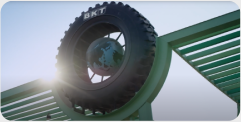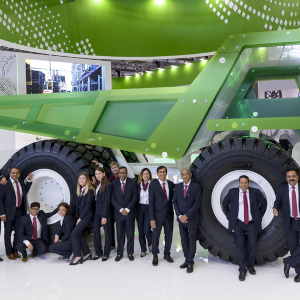How can you reduce the number of accidents on the job? With strict safety rules and the most appropriate working tools: let’s take a look at some recent hi-tech solutions for construction sites.
Safety is one of the most important aspects in the workplace, especially when considering hazardous work at adverse sites such as quarries, mines and construction zones. As you know, significant risk factors are present in these environments including: inhaling dust particles, danger of landslides, sinkholes, falling objects and proximity to high-voltage lines and units as well as enormous earth moving equipment in motion. These are just a few of the risks who those working in construction zones or quarries face every day.
How can you reduce the number of accidents on the job? By establishing and complying with strict safety rules, and by choosing the most appropriate working tools.

Training
Staff training is key to preventing injuries and accidents at work providing important rules and standard operating procedures. This helps staff members perform their daily tasks/duties safely, instilling risk awareness with regard to inappropriate behavior. As there’s always something new to learn, it is up to employers to ensure that all their staff members are properly trained and regularly updated with the latest rules on safety.
Toolbox
As for training, we can count on the numerous agencies that organize Health and Safety courses, but as for the working, we can count on a special ally: technology! Let’s take a look at some recent hi-tech solutions for those working in construction.
1. Hi-Tech helmets
A growing variety of hi-tech construction helmets has lent a real advantage in terms of safety at work and accident prevention. How? Here are some features of the most technologically advanced products:
- Integrated proximity sensors warn workers if they get too close to high-voltage power cables. An alarm goes off when the operator goes beyond the safety buffer for energy sources.
- Integrated lighting is extremely useful during night shifts, as rays of light generated reach as far as 5 meters away, lighting up the worker’s face. This allows co-workers to see facial expressions in the dark and understand quickly whether or not messages have been received.
- A Wi-Fi connection is important in order to have one line of communication open at all times for all site operators. Headphones and microphone are installed inside the helmet, so that there is no need to wear or bring along additional equipment.
2. Digital Communication
Since Wi-Fi is not always available on site, other encoded digital systems with a range of 1,000 meters have been developed, ensuring communication through walls and vehicles. Signals are transmitted digitally without using phone lines or the Internet. Unlike with radios or walkie-talkies, where you have to wait your turn to send a message, these systems allow messages to be sent and received at the same time. Several operators can participate in a conversation at once, much like that of a conference call.
3. RFID technology
Have you ever heard of RFID? Already widespread in many areas, the RFID technology is now making its way into the world of personal and property safety at construction sites. RFID, or Radio Frequency IDentification, is the technology for the automatic identification of objects, animals or persons based on electronic devices (called tags) that are capable of storing and supplying information even from remote locations.
It might sound complicated, but it really isn’t. For example, in the near future construction workers will have active tag badges transmitting data to a remote radio frequency reader. This technology enables the geolocation of site workers and facilitates access point control or evacuation plan management.
Experts agree that this type of technology can improve site workers’ safety. Being able to locate operators anywhere, anytime on site and provide quick turnaround response in case of an accident or any other emergency situation can definitely make the difference.
Even though the RFID technology offers enormous potential, for some aspects it is also controversial. In the coming weeks, we’ll discuss the topic in more detail and tell you how this new tool can facilitate your daily job….stay tuned!





